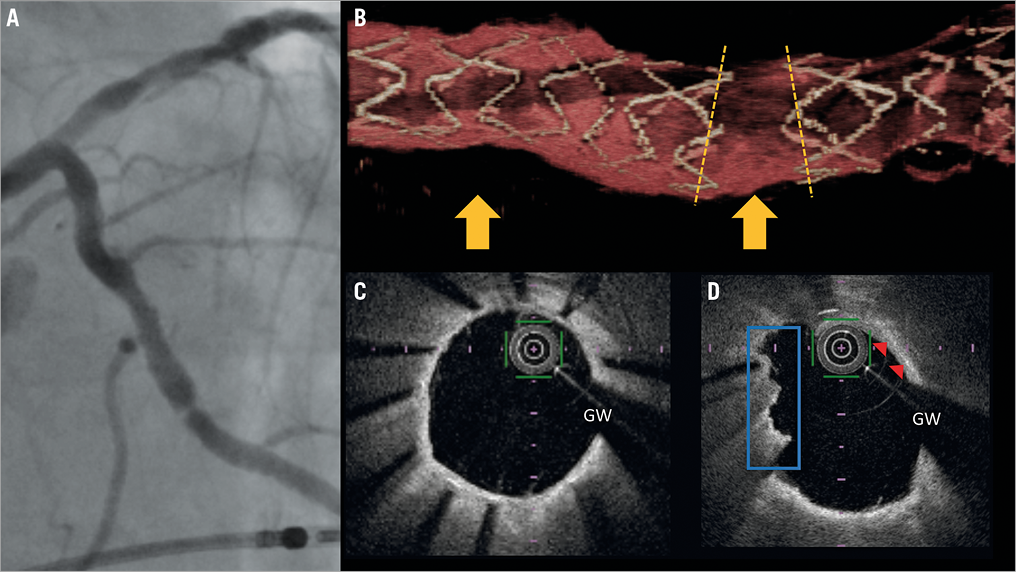

A 74-year-old man underwent a percutaneous coronary intervention (PCI) due to worsening effort angina pectoris. We implanted a 3.0×18 mm DES (Nobori®; Terumo Corp., Tokyo, Japan) in the left circumflex coronary artery (LCx). The final angiographic results were satisfactory for the targeted lesion. Thirty-three months later, coronary angiography revealed in-stent restenosis (Panel A, Moving image 1). After an angioplasty using a 3.0×15 mm balloon (Lacrosse® NSE ALPHA™; Goodman Co., Ltd, Nagoya, Japan), optical frequency domain imaging (OFDI) was performed. The multiple struts of the stent were completely fractured at the acquired transection with a gap in the stent body (Panel B, Moving image 2). Although Panel C shows circumferentially covered stent struts, superficial high-intensity high-attenuation plaque and a hazy appearance by OFDI might suggest accumulations of macrophage and mural thrombus on this fractured site (Panel D). Therefore, the main reason for in-stent restenosis in this case might be persistent mechanical stress due to total separation type stent fracture. Finally, an angioplasty was performed with a 3.0×15 mm paclitaxel-coated balloon (SeQuent® Please; B. Braun, Melsungen, Germany).
Acknowledgement
We acknowledge the kind advice received from Dr Gaku Nakazawa.
Conflict of interest statement
The authors have no conflicts of interest to declare.
Supplementary data
Moving image 1. Follow-up angiography revealed in-stent restenosis in the LCx.
Moving image 2. 3-dimensional OFDI showed the total separation type stent fracture.
Supplementary data
To read the full content of this article, please download the PDF.
Follow-up angiography revealed in-stent restenosis in the LCx.
3-dimensional OFDI showed the total separation type stent fracture.

